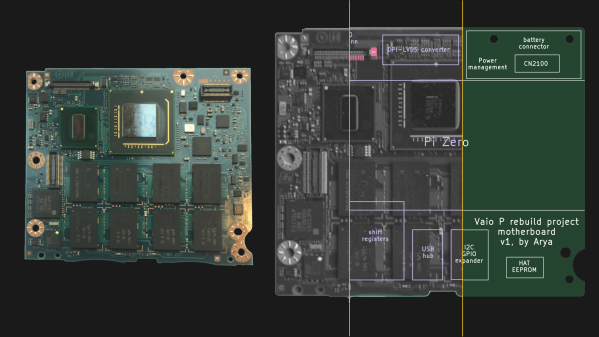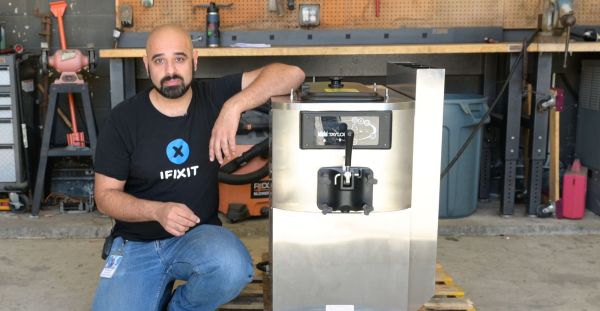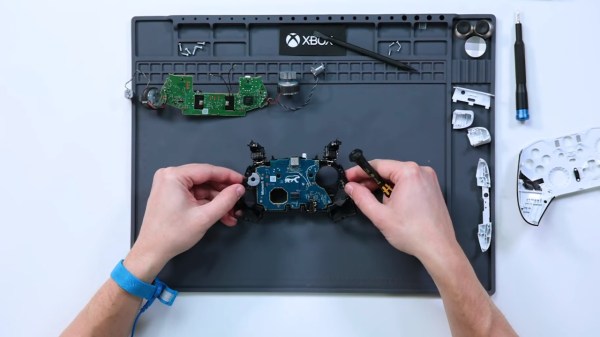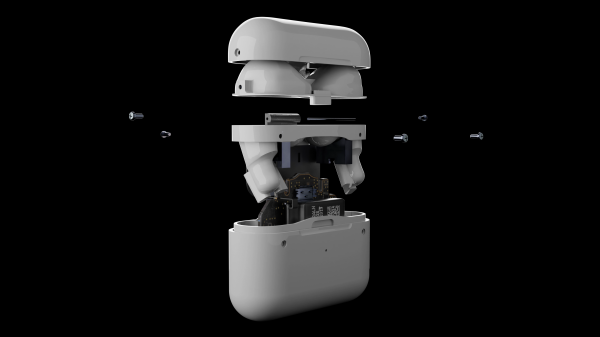Apple’s Vision Pro augmented reality goggles made a big splash in the news this week, and try as we might to resist the urge to dunk on them, early adopters spotted in the wild are making it way too easy. Granted, we’re not sure how many of these people are actually early adopters as opposed to paid influencers, but there was still quite a bit of silliness to be had, most of it on X/Twitter. We’d love to say that peak idiocy was achieved by those who showed themselves behind the wheels of their Teslas while wearing their goggles, with one aiming for an early adopter perfecta, but alas, most of these stories appear to be at least partially contrived. Some people were spotted doing their best to get themselves killed, others were content to just look foolish, especially since we’ve heard that the virtual keyboard is currently too slow for anything but hunt-and-peck typing, which Casey Niestat seemed to confirm with his field testing. After seeing all this, we’re still unsure why someone would strap $4,000 worth of peripheral-vision-restricting and easily fenced hardware to their heads, but hey — different strokes. And for those of you wondering why these things are so expensive, we’ve got you covered.
Revive A Sony Vaio P-Series With KiCad’s Background Bitmaps
You might remember that KiCad 7 came out this February, with a multitude of wonderful features. One of them was particularly exciting to see, and the KiCad newsletter even had an animated GIF to properly demo it – a feature called “Background Bitmaps”, which is the ability to add existing board images into your board editor, both front and back, and switch between them as you design the board. With it, you can draw traces, recreate the outline and place connectors over these images, giving you a way to quickly to reproduce everything on an existing PCB! I’ve seen some friends of mine use this feature, and recently, I’ve had a project come up that’s a perfect excuse for me to try it.

In short, something worth selling to a known tinkerer like me, but not particularly interesting otherwise. Nevertheless, about half a year later, when I fed it the desired 10.5 V from a lab PSU and gave the power button a few chances, it eventually booted up and shown me the BIOS menu on the screen! I’ve disassembled and reassembled it a few times, replaced the DC jack with an original one from a different Vaio ultrabook I happened to have parts from, and decided to try to bring it back to original condition.
Continue reading “Revive A Sony Vaio P-Series With KiCad’s Background Bitmaps”
2023 Hackaday Supercon: The Rest Of The Talks
The 2023 Hackaday Superconference is only two weeks away, and we’re happy to announce the second half of the slate. As always, this is a great mix of well-known Hackaday faces, and folks we haven’t yet met. Whether they’re fixing up the Apollo Guidance Computer, building their own airplanes, trapping rubidium atoms, or teaching robots to sail, this is another super interesting round of talks.
Tickets are sold out, the badges are almost done, and we’re in the home stretch! We can smell the tacos from here. If you’re joining us, we hope you’re excited. If you’re not able to, we’ll stream as much as we can.
All that remains is the mystery of the keynote speaker. Stay tuned! Continue reading “2023 Hackaday Supercon: The Rest Of The Talks”
The McDonald’s Ice Cream Machine Saga And Calls For Right To Repair

Raising a likely somewhat contentious topic, iFixit and Public Knowledge have challenged the manufacturer behind McDonald’s ice cream machines to make them easy to diagnose and repair. This is a subject that’s probably familiar to anyone who is vaguely familiar with US news and the importance of ice cream at McDonald’s locations to the point that a live tracker was set up so that furtive customers can catch a glimpse at said tracker before finding themselves staring in dismay at an ‘Out of Order’ sign on one of these Taylor ice cream machines.
The story is more complex than just a machine being “broken”, however. The maintenance contracts are lucrative, the instruction manual is long, and the error codes are cryptic. When you add to that the complexity of cleaning and maintaining the machines, it’s tempting to just claim the machine is out of order. These Taylor machines (the C602 and the C709 from the iFixit video) are a bit more complex than your usual ice cream maker in that they also have a pasteurization element that’s supposed to keep already poured mix safe to use the next day.
Continue reading “The McDonald’s Ice Cream Machine Saga And Calls For Right To Repair”
Microsoft Now Offering Parts And Repair Guides For Xbox Controllers
We’re big fans of repairable hardware here at Hackaday, so much so that when we see a company embracing the idea that their products should actually be serviced rather than thrown in the trash, we like to call attention to it. Yes, that even includes when it’s Microsoft.
This community has had a mixed relationship with the Redmond software giant, to say the least. But we’ve still got to give them credit when they do something positive. Not only are they offering a full selection of replacement parts for both the standard and Elite Xbox controllers, they’ve also provided written instructions and step-by-step video guides on how to install your new parts.
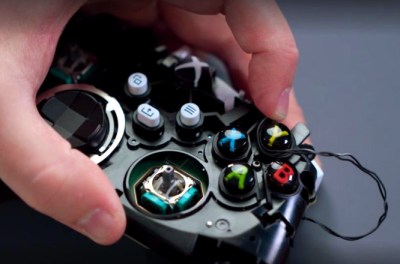 For those of you who stopped playing console games when the controllers still only had two buttons, this might not seem like such a big deal. But considering a new Xbox Elite Wireless Controller will set you back a dizzying $180, it’s not hard to see why some folks would be excited about the possibility of swapping out the guts of the thing for $50.
For those of you who stopped playing console games when the controllers still only had two buttons, this might not seem like such a big deal. But considering a new Xbox Elite Wireless Controller will set you back a dizzying $180, it’s not hard to see why some folks would be excited about the possibility of swapping out the guts of the thing for $50.
Of course, these parts were already available from third party sellers, and iFixit naturally has repair guides for all the different flavors of Xbox controllers. Nothing about what Microsoft is doing here makes the Xbox controller fundamentally any easier to repair than it was previously. But the fact that the company isn’t treating their customers like adversaries is a step in the right direction.
Valve has been similarly open about the internals of the Steam Deck, though their presentation was a bit dramatic, and even Sony provided an official teardown video for the PS5. We’re not sure why these companies are willing to pull back the curtain when it comes to gaming hardware. Whatever the reason, we’re certainly not complaining.
Continue reading “Microsoft Now Offering Parts And Repair Guides For Xbox Controllers”
Fixing Some More Of Apple’s Design Mistakes
Love them or hate them, there’s no denying that Apple has strayed from the Woz’s original open platform ideal for the Apple II. [Ken Pillonel] is back for another round of fixing Apple’s repairability mistakes with a full complement of 3D printable replacement parts for the AirPods Pro case.
While modeling all of the parts would be handy enough for repairing a device with a 0/10 iFixit score, [Pillonel] modified the parts to go together with screws instead of adhesive so any future repairs don’t require cracking the plastic egg. He says, “By showcasing the potential for repairability, I hope to inspire both consumers and multi-billion dollar companies, like Apple, to embrace sustainable practices in their products.”
[Pillonel]’s repairability exploits may seem familiar to readers from his previous work on adding USB-C to the iPhone and the AirPods Pro case. If you just need to retrieve a lost AirPod, you might try an electromagnet, or you can make a Bluetooth receiver from a pair of knock-off buds.
Continue reading “Fixing Some More Of Apple’s Design Mistakes”
AirTags, Tiles, SmartTags And The Dilemmas Of Personal Tracking Devices
In an ideal world we would never lose our belongings, and not spend a single hour fruitlessly searching for some keys, a piece of luggage, a smartphone or one of the two dozen remote controls which are scattered around the average home these days. Since we do not live in this ideal world, we have had to come up with ways to keep track of our belongings, whether inside or outside our homes, which has led to today’s ubiquitous personal tracking devices.
Today’s popular Bluetooth-based trackers constantly announce their presence to devices set up to listen for them. Within a home, this range is generally enough to find the tracker and associated item using a smartphone, after which using special software the tracker can be made to sound its built-in speaker to ease localizing it by ear. Outside the home, these trackers can use mesh networks formed by smartphones and other devices to ‘phone home’ to paired devices.
This is great when it’s your purse. But this also gives anyone the ability to stick such a tracker device onto a victim’s belongings and track them without their consent, for whatever nefarious purpose. Yet it is this duality between useful and illegal that has people on edge when it comes to these trackers. How can we still use the benefits they offer, without giving stalkers and criminals free reign? A draft proposal by Apple and Google, submitted to the Internet Engineering Task Force (IETF), seeks to address these points but it remains complicated.
Continue reading “AirTags, Tiles, SmartTags And The Dilemmas Of Personal Tracking Devices”


